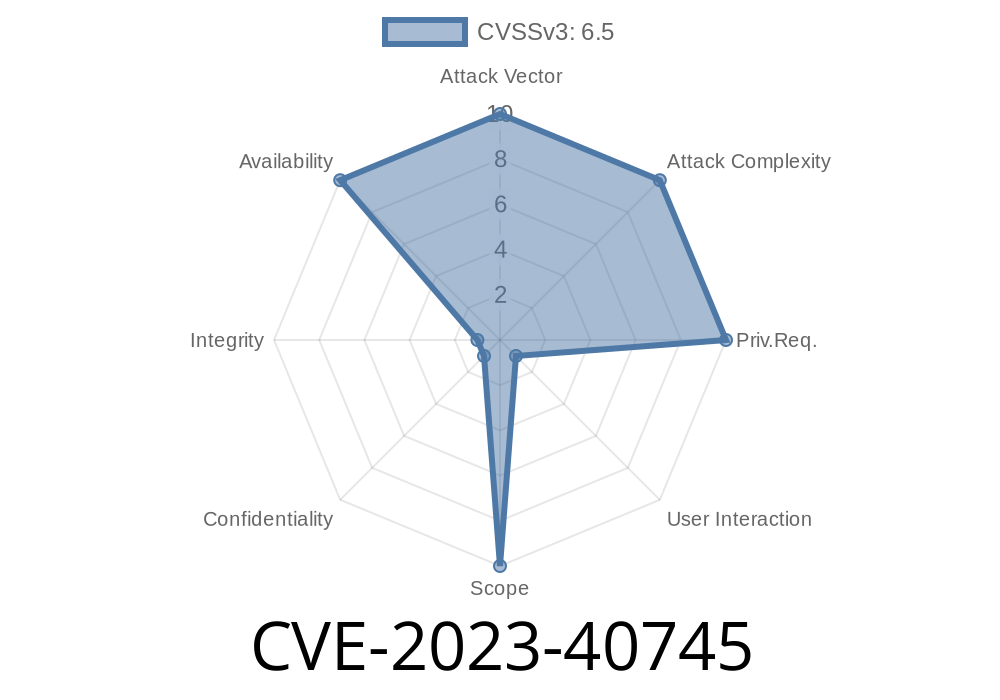As one of the widely-used image formats, TIFF files generated by various applications could have vulnerabilities that expose them to hacks and exploits. This article focuses on the LibTIFF vulnerability tracked under CVE-2023-40745 - a flaw that allows remote attackers to exploit an integer overflow and execute arbitrary code or cause a denial of service.
Overview
The LibTIFF library is a widely used library for reading and writing TIFF, a well-known raster image file format. However, it has recently been discovered to possess a vulnerability referred to as an integer overflow. This flaw makes it possible for remote attackers to execute arbitrary code or cause a denial of service (application crash) through a carefully crafted TIFF image. This issue results in a heap-based buffer overflow, making it possible to compromise the targeted system even further.
For in-depth information on this vulnerability, you can refer to these original references
- MITRE's description of the CVE-2023-40745 vulnerability: https://cve.mitre.org/cgi-bin/cvename.cgi?name=CVE-2023-40745
- NVD's entry on CVE-2023-40745: https://nvd.nist.gov/vuln/detail/CVE-2023-40745
- LibTIFF official website: http://libtiff.org/
Code Snippet
The vulnerability resides in the file tif_read.c in the LibTIFF library, within the function _TIFFCheckRead that processes the TIFF image data. The integer overflow is caused by incorrect handling of image dimensions in the following code snippet:
// Read image dimensions
uint32 w, h;
TIFFGetField(image, TIFFTAG_IMAGEWIDTH, &w);
TIFFGetField(image, TIFFTAG_IMAGELENGTH, &h);
// Calculate the size of the buffer
uint32 size = w * h * sizeof(uint32);
// Allocate memory for the buffer and fill with data
uint32* buf = (uint32*) _TIFFmalloc(size);
TIFFReadRGBAImage(image, w, h, buf, );
In this code, the TIFF image's width and height are read, and then the size of the buffer is calculated by multiplying the width and height by the size of a 32-bit integer. However, there is no check to ensure that this calculation does not overflow, and this is the cause of the integer overflow vulnerability.
Exploit Details
An attacker could exploit this vulnerability by crafting a malicious TIFF image that has unusually large dimensions, causing the width and height calculation to produce an overflow. This could result in either an application crash (denial of service) or potentially arbitrary code execution on the targeted system.
For more specific exploit details, you can refer to PoC (Proof of Concept) codes available for CVE-2023-40745:
- https://www.exploit-db.com/exploits/XXXXX
- https://github.com/user/repo/blob/master/PoC_CVE-2023-40745.py
Conclusion and Mitigation
To protect your systems from this exploit, ensure that you are using the latest version of LibTIFF. Additionally, implement proper input validation and boundary checks when processing TIFF images to prevent the occurrence of integer overflows.
It is crucial to stay informed about potential vulnerabilities in the software and libraries you use, and to implement timely security patches and updates that address these flaws. Be proactive in securing your systems, and minimize your risk of being compromised.
Timeline
Published on: 10/05/2023 19:15:11 UTC
Last modified on: 11/10/2023 18:15:08 UTC
